Is California doing enough on climate? We asked the new CPUC chief
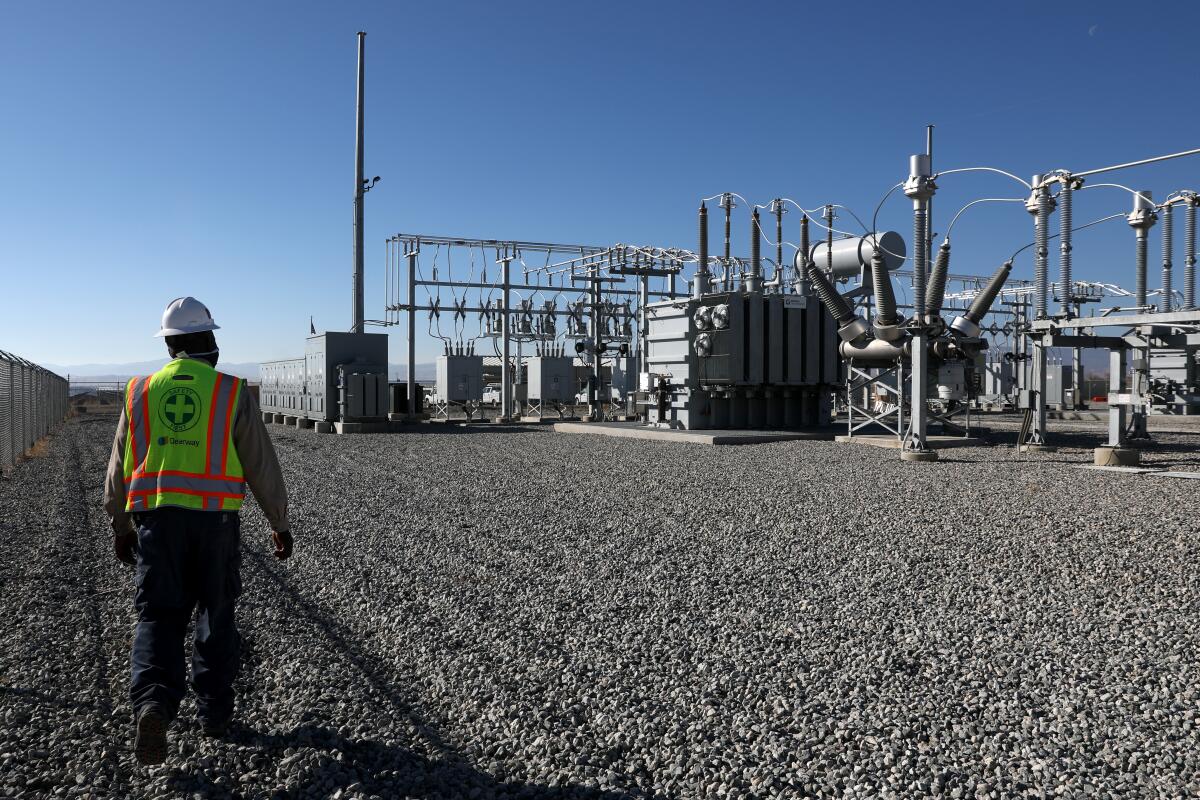
- Share via
This is the March 17, 2022, edition of Boiling Point, a weekly newsletter about climate change and the environment in California and the American West. Sign up here to get it in your inbox.
What employs 1,400 people, has a $2.8-billion budget and oversees Pacific Gas & Electric, Uber and the Union Pacific Railroad?
If you guessed the California Public Utilities Commission, well, you probably read the headline of this story.
Or, if you’re like me, you’re intimately familiar with the 143-year-old agency. The CPUC is a powerful bureaucracy with a long list of regulatory responsibilities, including electric and gas utilities, ride-hailing services, rail safety and privately owned water utilities.
For the purposes of this newsletter, the CPUC is important because of its huge role in confronting the climate crisis. The agency must approve all clean power purchases by electric utilities including PG&E and Southern California Edison, while making sure those companies have the right mix of resources to keep the lights on. It is also tasked with pushing the natural gas industry to reduce planet-warming pollution, as well as determining financial incentives for rooftop solar — a subject of intense debate.
The agency’s new president is Alice Reynolds, and she was kind enough to spend an hour talking with me. Reynolds was appointed by Gov. Gavin Newsom in November after previously serving as an energy advisor to him and to his predecessor, Gov. Jerry Brown. She replaced Marybel Batjer, who announced her resignation from the CPUC last fall, less than one year into a six-year term.
Reynolds and I discussed rooftop solar, the pace of the energy transition, high electric rates and the difficulty of holding Pacific Gas & Electric accountable, among other topics. Here are some highlights from our conversation, edited and condensed for clarity.
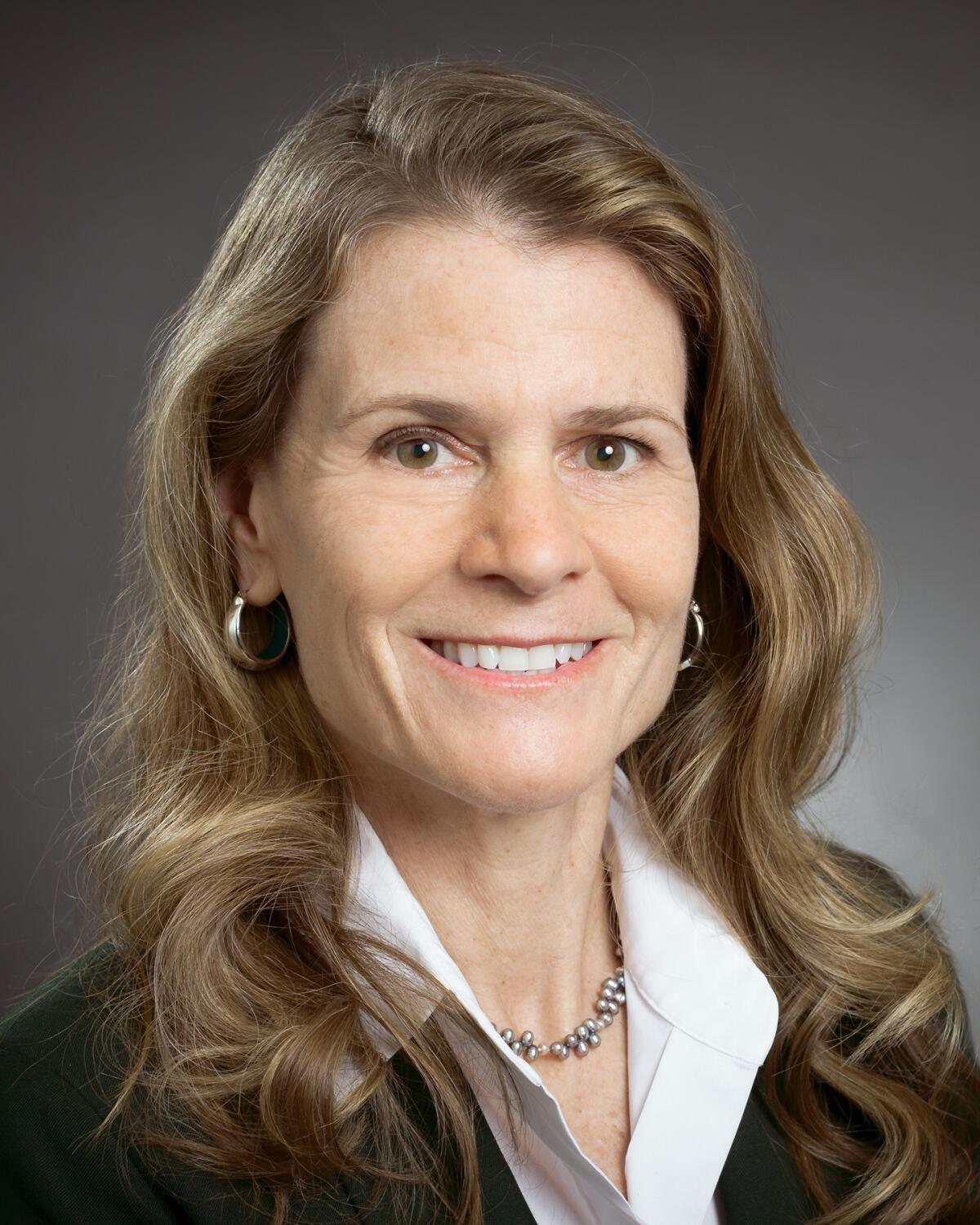
ME: Let’s talk climate. The commission recently set a stricter 2030 emissions target, but some climate activists still say it’s still not good enough. And Newsom has talked about 2045 being too long to wait for 100% clean electricity. What is the CPUC doing to get more solar farms, wind turbines, batteries and other clean energy facilities built more quickly?
REYNOLDS: We’re thinking short term, midterm and long term, and trying to do the planning for the longer term so that we can pull forward development of new resources as soon as possible. If we can get to the ultimate target sooner, that’s better.
Right now, one of the biggest challenges is just getting projects built. We’ve had a huge amount of battery projects go into the ground this past year, just unprecedented. But it’s a complicated process. Jointly with other agencies, we have been working on supply-chain issues. For instance, if we know that battery shipments are coming in, can we make sure those are prioritized?
ME: Last summer, the commission ordered utilities and local governments to buy 11,500 megawatts of new clean power resources by 2026 to help replace the Diablo Canyon nuclear plant and four Southern California gas plants. How confident are you that those resources will be built fast enough to avoid a repeat of the August 2020 rolling blackouts — or worse?
REYNOLDS: It’s scary, right? What we’re doing is so important to the state, and so important to the planet. We didn’t anticipate the pandemic. I don’t think we anticipated the wildfire season being so catastrophic. It’s hard to know what’s going to hit us next.
But based on the ability of the developers, the state agencies, the governor’s office, the utilities and the local governments all working together — and the contracts that have already been entered into — I have a lot of confidence that we can do this.
ME: Those Southern California gas plants were supposed to shut down in 2020, but after the rolling blackouts state officials extended the closure deadline to 2023. Do you see that date as being set in stone, or are you open to another extension?
REYNOLDS: We have taken steps so that we don’t need those plants. We have deadlines in our procurement orders to make sure we have resources to replace them. What I want to do is focus on making sure those clean energy projects get built.
I never want to say never. Something could always happen that’s unexpected. But that is the date we are targeting.
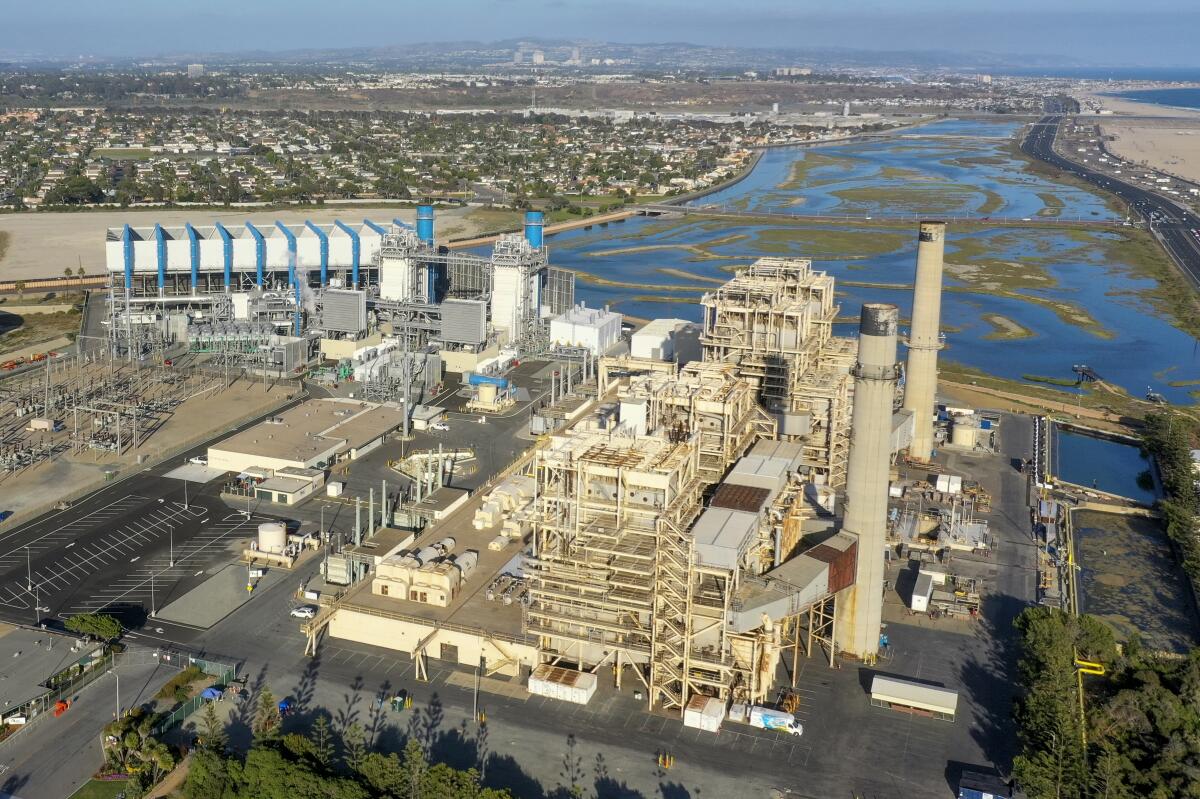
ME: Lithium-ion batteries will play a big role in replacing gas, but the state’s largest battery facility, at Moss Landing along the Central Coast, has been offline for months after two overheating incidents. Have you been following that?
REYNOLDS: I have been. It sounds like they haven’t identified a defect in the battery system, which is good news. They had a malfunction and have been able to correct it. But we are asking questions of other facilities, and pointing to Moss Landing and saying everyone should pay attention and make sure you don’t have similar problems. It’s hopefully more of a growing pain.
ME: The California Independent System Operator recently projected a need for $30.5 billion worth of new transmission lines over the next 20 years, to connect renewable energy facilities with cities that need power. Transmission lines are expensive and can take a decade to bring to fruition, and the CPUC has been criticized by developers and activists for being too slow and too hesitant to allow utilities to spend ratepayer money building them. Does that needs to change?
REYNOLDS: In the past, we’ve had a more — I wouldn’t say a more conservative approach, but the approach that matched where we were on the buildout of new resources. It’s been described by some people as just going forward with no-regrets projects. I think we have been adjusting. But I wouldn’t say we want to abandon the no-regrets approach. We have to get the balance right.
So yes, we know we need to build transmission. We need to think about planning for it and not waiting until the last minute, because these are long projects. And if there are opportunities to avoid new transmission, we’ll certainly look at those as well.
ME: Speaking of avoiding new transmission, let’s talk rooftop solar. I know you can’t say a lot about rooftop solar incentives, since the net metering incentive program is the subject of an active commission proceeding. But Newsom criticized the CPUC’s recent proposal to slash net metering — and after joining the agency, you shelved the proposal. Why?
REYNOLDS: I wouldn’t call it shelved, necessarily. I would just say we’re taking some time to look at it and consider it really carefully, and consider all of the comments in the record.
ME: Can you give us a sense of how long it might take to come out with a new proposal, or announce your next step?
REYNOLDS: No, I can’t say.
ME: Bigger picture, what role do you see rooftop solar playing in meeting California’s climate goals?
REYNOLDS: We can look at the Energy Commission’s 100% clean energy report and use that as a blueprint. The assumptions for growth of customer solar are significant — 39 gigawatts by 2045, up from about 10 gigawatts today. There’s a lot of work to do.
ME: Are there other steps the CPUC can take to get more rooftop solar built, or does it all come down to net metering?
REYNOLDS: We do have other proceedings on distributed resources. But I wouldn’t really limit it to rooftop solar. There’s batteries, there’s electric vehicles, there’s energy efficiency, there’s heat pump water heaters, there’s load flexibility. All of those things are going to impact electricity demand. And we need to make sure we have the resources to serve that demand.
ME: One area where California has lagged behind other states is community solar — small local facilities that serve families who live in apartments or don’t own their homes. Should the CPUC do more to promote community solar?
REYNOLDS: I think so. I am very intrigued with the concept. It is related to the [net metering] proceeding, and it is an open issue there, so I don’t want to say too much. But in general, I would really like to explore ways to take advantage of community solar.

ME: A major focus of the commission lately has been affordability. Electricity costs are rising fast, which hurts low-income families the most and could disrupt the state’s climate plans by making it harder for people to afford electric vehicles and electric heat pumps. What is the CPUC doing, or what should it be doing, to keep electric and gas rates under control?
REYNOLDS: Affordability is something we need to look at very closely. Wildfire prevention costs are beginning to show up in rates, and we’ve also seen rates impacted by the spike in natural gas prices, unfortunately. We’re working on our low-income programs to make sure that they’re fully subscribed and working as they should be. We have a pilot percentage-of-income payment plan.
Can someone else pay for some of these costs, rather than ratepayers? I would point to one example where the governor and the Legislature created a program to use federal funds from the American Rescue Plan to give $1 billion in debt relief to utility customers during the pandemic. These funds are automatically credited to bills, so they just flow straight to ratepayers.
It’s the low-income, most vulnerable residents who are struggling, and we want to make sure they get extra attention. But it’s also everybody. Many people don’t qualify for our CARE discounted rate program, but they’re also struggling to make ends meet.
ME: I’ve heard it suggested that the Legislature should use the state budget to pay for some of the programs currently funded through electricity rates, such as wildfire prevention and energy efficiency incentives. That would arguably be more progressive, because the heaviest burden wouldn’t fall on the lowest-income households. What do you think?
REYNOLDS: I think that’s more a question for the Legislature, and balancing the priorities of the budget.
ME: One of the CPUC’s highest-profile issues the last few years has been PG&E. What would you say to critics who feel the agency hasn’t done nearly enough to hold the company accountable as its poles and wires continue to spark fires?
REYNOLDS: The commission, including before I got here, has been taking enforcement actions against PG&E. We have issued record penalties — starting with the San Bruno gas pipeline explosion and going to the North Bay fires — of several billion dollars.
But it’s not just about penalties. It’s about making sure PG&E has a culture of safety, is making the right decisions and has the right incentives in place — and then holding them accountable with penalties and our enforcement authority when they screw up.
PG&E has changed. They have a new board in place, and new executive management. They are taking actions to shore up their system, to harden their infrastructure, to improve the way they do vegetation management. But we’re going to continue to watch them. We’re going to make sure that they’re being as efficient as possible and that they’re spending money in the right ways.
ME: One more question: The CPUC is nominally an independent agency, but its members are appointed by the governor, your former boss. To what extent do the commissioners coordinate with Newsom, or take direction from Newsom?
REYNOLDS: When we’re making decisions, we’re doing that on the basis of the record before us, and on legal standards.
When we’re talking about larger policy goals — yes, we’re independent, but we’re not going to ignore the fact that the governor issued an executive order calling for all light-duty vehicle sales to be zero-emission by 2035, for example. We’re not going to ignore his calls for moving more quickly on climate change, especially given the impacts that we’re seeing here in California.
***
Look out for more from our conversation in some upcoming stories. Subscribe to The Times to make sure you don’t miss them.
Until then, here’s what’s happening around the West:
TOP STORIES
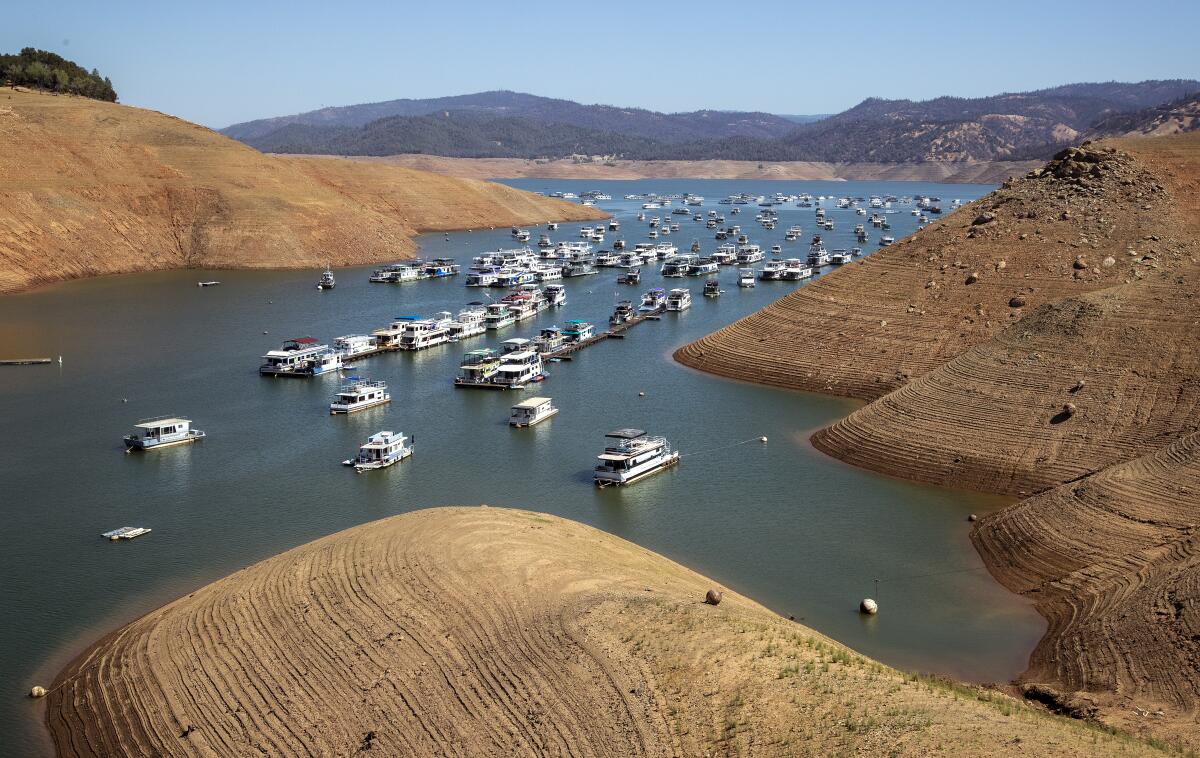
California cities used more water in January 2022 than they did in January 2021, despite a worsening drought and a call from Gov. Gavin Newsom to cut back by 15%. Here’s the story from The Times’ Hayley Smith. State officials, of course, are urging Californians to save water — but not mandating it yet despite the driest January and February on record, my colleague Ian James reports. And of course this is a problem across the West. Just look to Lake Powell; the Colorado River reservoir fell below a key threshold this week for the first time ever, per the Arizona Republic’s Brandon Loomis. In Utah, conditions are so bad that neighboring counties are fighting over dwindling groundwater supplies, Amy Joi O’Donoghue writes for the Deseret News.
Why does gasoline cost so much more in California than in other states? It’s not just higher taxes and environmental rules — there have been allegations of illegal price fixing, Connor Sheets reports for The Times. Elected officials are taking note, with one state lawmaker introducing a bill that would force Golden State oil refineries to open their books, Eliyahu Kamisher reports for the Mercury News. You’d think lowering or suspending the gas tax would be a home run with voters, but the politics are actually quite challenging; my colleague Phil Willon explains why. You’d also think high gas prices would prompt more Angelenos to take public transit — and while the jury is still out, commuter rail ridership on Metrolink saw an 8% uptick, The Times’ Rachel Uranga writes.
Global carbon dioxide emissions reached their highest level ever last year. Details here from USA Today’s Doyle Rice, who writes that emissions rose by 6%, with coal accounting for 40% of the increase. And lest we forget that fossil fuels don’t just drive the climate crisis, a study out of North Dakota’s Bakken region finds that flaring — burning off excess natural gas at drilling sites — can increase hospitalizations for people living as far as 60 miles away, Hannah Grover writes for New Mexico Political Report.
ALL ABOUT NATIONAL PARKS
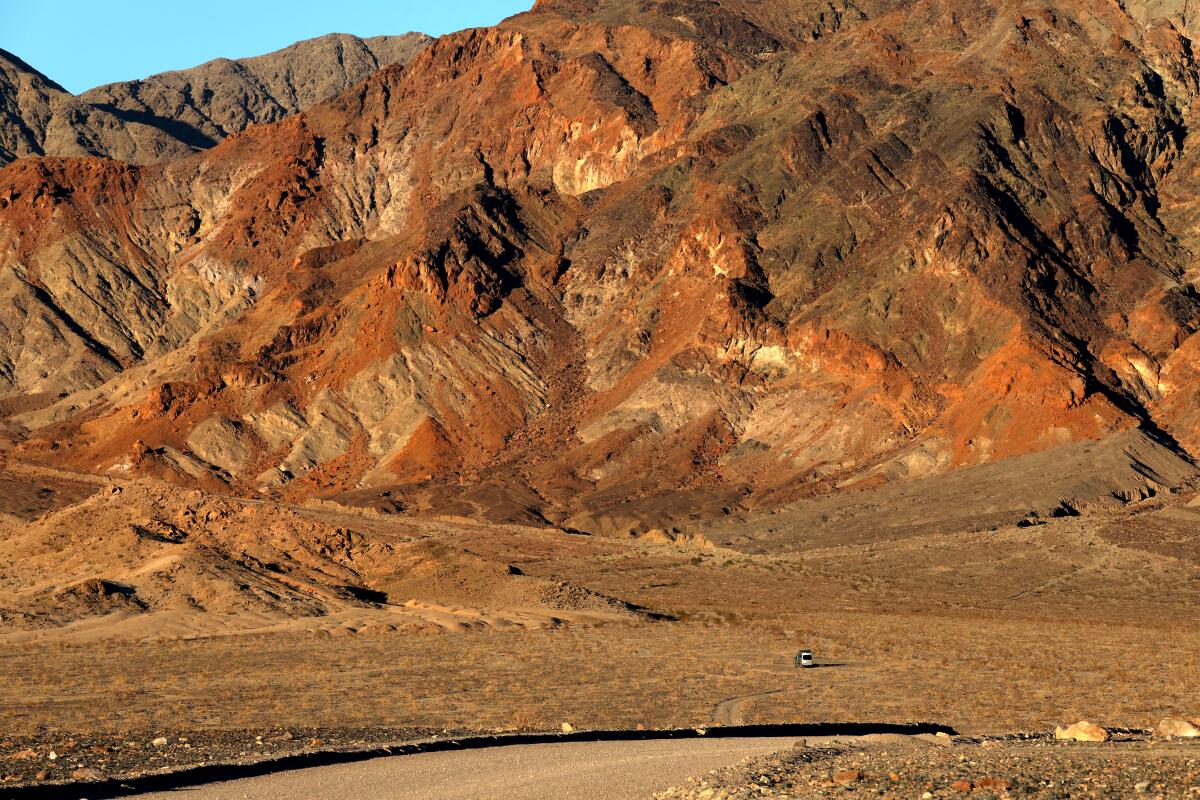
Will a solar boom in rural Nevada hurt tourism to Death Valley National Park? Local officials in and around the Death Valley gateway town of Beatty are alarmed by 14 solar projects proposed in 14 months, with a collective capacity of 14,000 megawatts, Scott Streater reports for E&E News. This is yet another example of the growing tension between renewable energy and aesthetic values, which I’ve written about previously. It’s also a reminder that Death Valley is a pretty special place ... especially for the guy who recently hiked 170 miles through the park in 96 hours, staying alive (barely) by filtering arsenic-laden water along the way. My colleague Lila Seidman chronicled his journey. (In all seriousness, please don’t try this yourself, or you will probably die.)
Elsewhere in the desert, Joshua Tree National Park saw more than 3 million visits last year, and it badly needs more funding to keep up with surging crowds. The Desert Sun’s Janet Wilson spent a day with Joshua Tree’s superintendent, David Smith, to see how he’s handling the influx; Smith told her he thinks the park is so popular because, despite the harsh environment, “life holds on and it thrives here. It for me is a good example of what I want out of life.” (He wants a new southern entrance for the park too.) If you love Joshua Tree, also be sure to check out these jaw-dropping photos taken by The Times’ Allen J. Schaben.
Lt. Gen. Philip Sheridan played a key role in the early protection of Yellowstone National Park — and the wide-brimmed hats worn by Park Service rangers today started with the Army troops who originally enforced park rules. I definitely didn’t know this part of Yellowstone’s origin story, as told by Dave Kindy for the Washington Post. Meanwhile, as the park celebrates its 150th anniversary, hunters have killed about one-fifth of its wolves in less than six months, the Post’s Joshua Partlow reports.
AROUND THE WEST
Bureau of Land Management data show that 54 million acres of federal land are failing the agency’s health standards — largely because of cattle grazing. That’s half the rangeland the bureau has assessed, Kylie Mohr reports for High Country News, in a story that does not paint a pretty picture of how the federal government manages our public lands. Fossil fuel extraction also poses a threat, which is why conservationists were glad to see Trump-era oil and gas leases in Nevada and Wyoming canceled by a federal judge, as Niina H. Farah reports for E&E News. Then there’s mining — and if President Biden imposes sanctions on Russian uranium, it could help spur domestic uranium mining on public lands, Jonathan P. Thompson writes in his Land Desk newsletter.
The Sauk-Suiattle Indian Tribe is suing Seattle on behalf of salmon in the Skagit River, arguing that hydroelectric dams are violating the salmon’s constitutional right to be free from illegal seizures. “People need to know that these are our laws, and if you come into our territory and do things that affect us you should be familiar with our laws,” a tribal lawyer told the Guardian’s Lester Black. “These tribal beliefs shouldn’t be ridiculed. They’re based on ancestral knowledge that shouldn’t be discounted.”
New Mexico’s largest wind farm is now online, sending power to L.A. and other California cities. The Land of Enchantment has a lot more wind to export — but only if new power lines get built, Kevin Robinson-Avila reports for the Albuquerque Journal.
POLITICAL CLIMATE
State lawmakers quickly passed — and Gov. Gavin Newsom quickly signed — a law amending the California Environmental Quality Act so that UC Berkeley doesn’t have to cut down on fall enrollment, as instructed by a recent court order. Here’s the story from The Times’ Colleen Shalby, who quotes Assembly Speaker Anthony Rendon as saying he’s “not a proponent of gutting an act that has made California a leader in environmental protections and environmental innovation,” but that he voted to amend CEQA because “we have seen recently the misguided application of an environmental law to student enrollment.”
With Hollister Ranch homeowners gearing up to sue to block access to the pristine beaches they currently lord over, the California Coastal Commission is pushing back the timeline for public access. Details here from Matthew Renda at Courthouse News Service. The fact that public access is in the cards at all is largely due to my colleague Rosanna Xia’s tireless coverage.
A judge has blocked another sprawling suburban development over wildfire concerns. The 3,000-home project in San Diego County might still get built if the developer can improve wildfire evacuation routes, Blake Nelson reports for the San Diego Union-Tribune. Even if that happens, though, the community is sure to generate lots of climate pollution from lengthy car trips.
ONE MORE THING
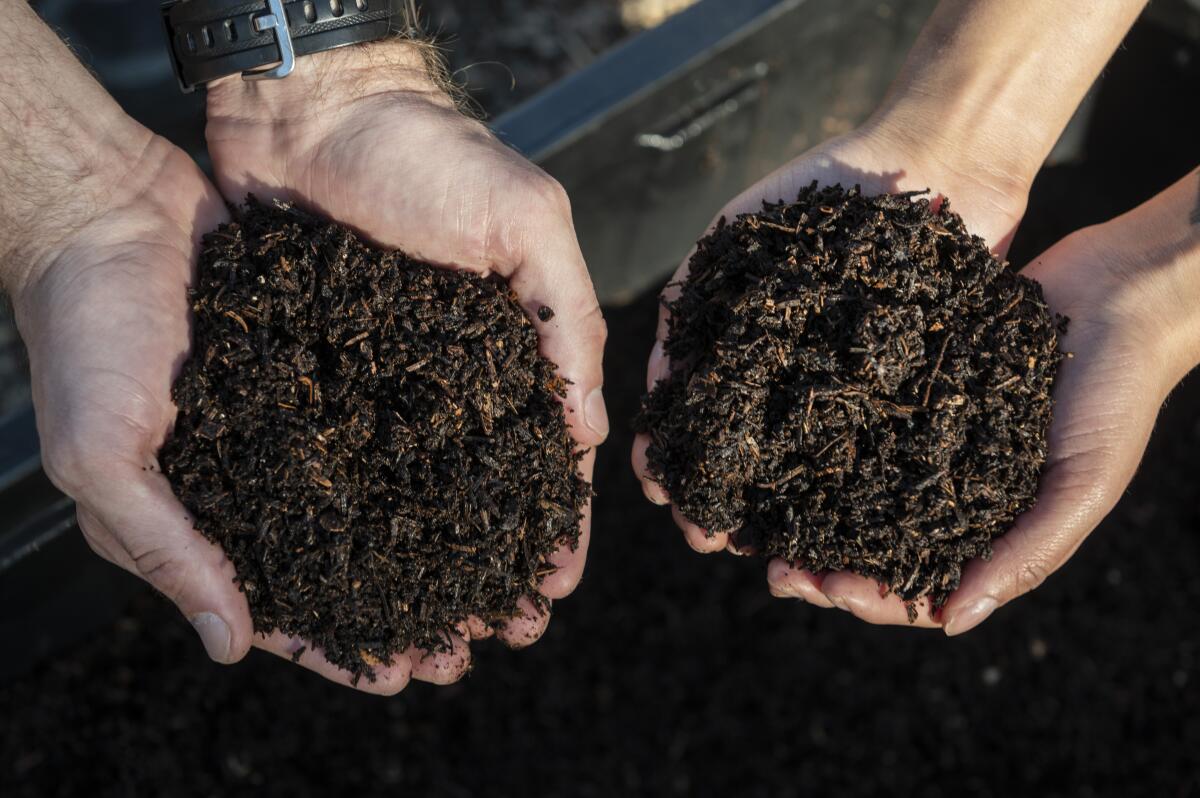
Full disclosure: I’ve never composted, but I’ll probably have to learn thanks to a new state law. So I appreciated this story by my colleague James Rainey on local groups that are helping Angelenos make more sustainable choices for their food waste. It reminded me of the climate benefits of sending less waste to landfills, and helped me start to wrap my mind around composting.
I also learned a lot about the tricky process of installing an electric vehicle charger in your home from this piece by The Times’ Russ Mitchell, based on his own experience after buying a used EV. Same with Jon Healey’s tips for saving money on gasoline.
News you can use, courtesy of the L.A. Times. Have I mentioned you should subscribe?
We’ll be back in your inbox next week. If you enjoyed this newsletter, please consider forwarding it to your friends and colleagues.




